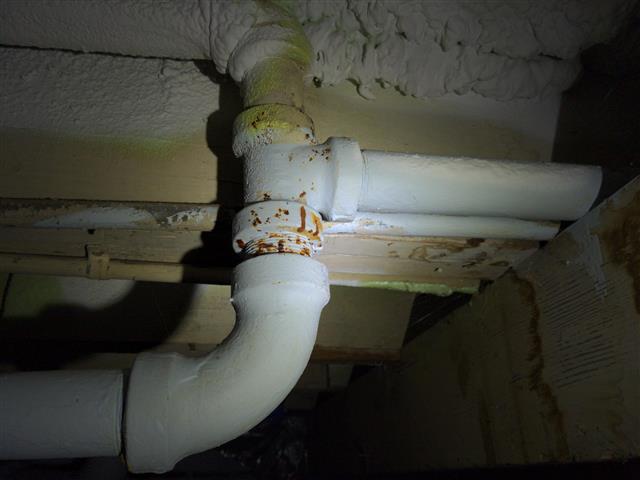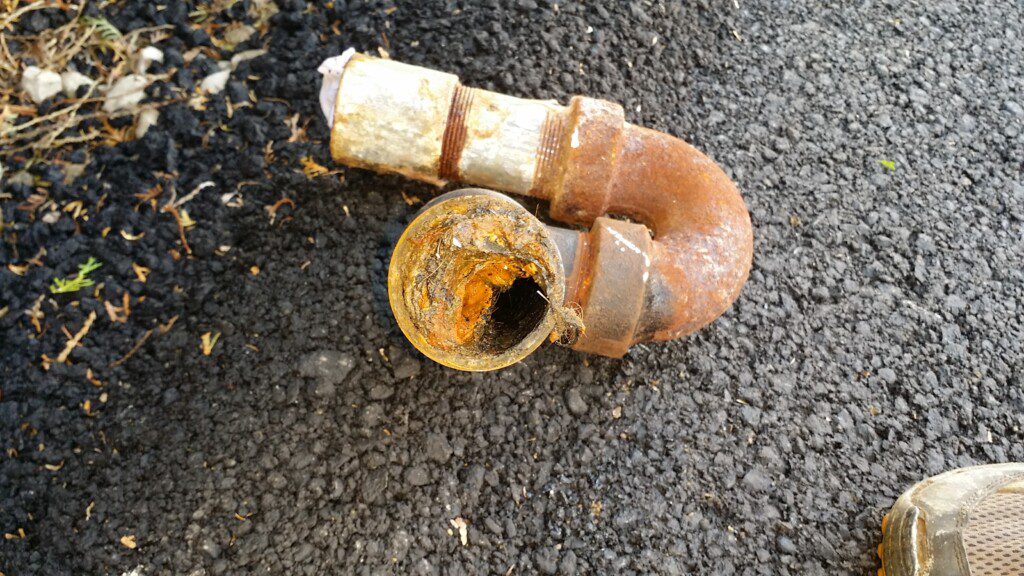
Galvanized drain pipes that are used for waste and sewer systems are typically larger in diameter. They are designed to carry waste water and other sewage materials away from buildings and into the main sewer line. These pipes are typically buried underground, in walls, and are not under pressure, so they do not need to be as strong as supply pipes.
Galvanized piping was commonly used in residential plumbing systems well into the 1960s. However, these pipes have a tendency to corrode over time, especially if the zinc coating is damaged. As a result, the pipes can become clogged with rust, which can reduce the flow of waste and ultimately lead to clogs. Another problem with internal rust in galvanized pipes is the elevated risk of debris becoming stuck or caught on the rough surface, which in turn, collects more debris. Large chunks of rust have been known to break loose from pipe walls and create significant blockages.

Drain pipes serving the kitchen and tub / showers tend to corrode faster. In general, galvanized pipes can last between 20 and 50 years, although some may last longer if they are well-maintained and not subjected to harsh conditions. Because most drain pipes are located within walls, floors, basements and crawl spaces, small minor leaks that develop may be difficult to catch before significant damage occurs. It is important to note that damaged caused by slow leaks from galvanized drain pipes will likely not be covered by homeowners insurance as the damage was not caused by an “event”, leaving the property owner to carry the costs.
Even if galvanized pipes are still functioning, it may be wise to replace them if they are more than 50 years old, as they may no longer be safe or reliable. The cost of replacing aged or failing drain pipes can range widely. The biggest obstacle to replacing these pipes is access. Most older homes that contain galvanized plumbing, will likely have tight crawl spaces, which will complicate or restrict repairs, increasing labor costs. As well as difficulty accessing the pipes, walls, ceilings and cabinets may need to be cut open to allow for proper repairs. Repairs to any areas opened up, would also increase replacement costs. Although replacement costs can be high, it is recommended to replace galvanized pipes with newer materials, such as plastic, which are not likely to corrode. Additionally, newer materials are often more durable and can provide better performance, resulting in a more reliable and easier to repair plumbing system.
